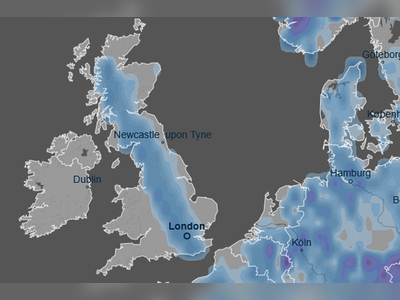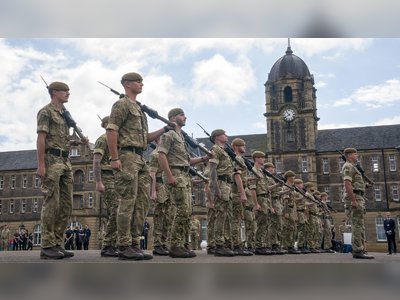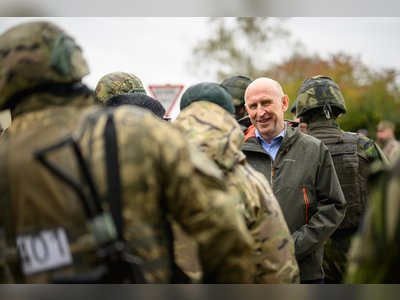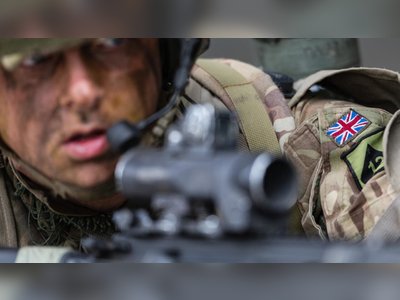Drones Over Donbas: Ukraine's Civilian Frontline in a Technological Tug-of-War
As drone warfare advances, Ukraine's improvised aerial assaults redefine both the battlefield and global military dynamics
In the barren stretches of eastern Ukraine, a new paradigm of warfare has taken root.
Denys, a soldier with Ukraine’s Khyzhak brigade, candidly reflects on this seismic shift: 'There are fewer gunfights because there are more drone fights.' Once defined by the sound of rifles and the grim familiarity of trenches, the battlefield has evolved into a domain dominated by buzzing drones, converting kilometers of land into a strategic labyrinth of tactics and engineering acumen.
The transformation, led by simple yet profoundly effective First Person View (FPV) drones, has created a scenario far removed from the battlefield imagery common in previous conflicts.
Hidden miles behind frontlines, Russian and Ukrainian squads pilot these small aircraft, each armed with explosives potent enough to alter the pace of war one silent strike at a time.
Denis nostalgically recalls the early days of the conflict: 'Back in 2022, we were still running around with machine guns from the tree lines.' Now, The Economist might report, these manned and unmanned machines conduct warfare with precision akin to a sniper’s job.
The FPV drones have become the ‘weapons of choice’ within the space of a year, as Samuel Bendett from the Center for Naval Analyses noted.
These small, nimble quadcopters have graduated from a quirky novelty to an essential tool of modern military engagement.
Equipped with goggles and handheld controls, soldiers like Dima—known by his call sign “Khimik”—patiently guide their drones toward targets with lethal accuracy.
The aim is always to optimize impact while conserving resources, Dima explains, comparing the task to skilled marksmanship.
The evolution is not solely tactical but also logistical and cultural.
Derived predominantly from creatively assembly and crowd-funded sources, these drones represent a high-tech grassroots initiative turned military necessity.
Ukrainian citizens and soldiers alike assemble these devices in workshops and living rooms far from the frontline, driven by a collective national commitment to adapt and outmaneuver the invading forces.
Serhii Sternenko, a popular blogger and fervent drone advocate, exemplifies Ukraine’s ingenuity.
His fundraising prowess and swift delivery methods have successfully facilitated the acquisition of tens of thousands of drones for the Ukrainian forces.
Sternenko points out a stark reality: 'Air defence is very expensive...
but a drone might only be a few hundred dollars.' His efforts underscore a critical shift: war’s technological democratization now empowers individuals and small collectives in unprecedented ways, a development that could upend traditional hierarchies of military power.
Yet this new strategy carries its own challenges.
The learning curve for drone pilots is steep—70 hours in both simulators and actual flight time are standard for newcomers.
With courses intensifying, Ukraine continues to invest in this expanding facet of its military doctrine, despite underlying frictions within military command structures about the influence of civilian-led initiatives.
As global eyes watch closely, Ukraine deftly navigates a complicated geopolitical reality.
The potential resurgence of U.S. political dynamics led by Donald Trump could alter foreign aid and military assistance, intensifying the impetus for homegrown technological solutions.
'That’s why we are calling for more weapons and more technology,' emphasizes Sternenko, 'because you cannot just fight with people.'
The nation contends with an adversary exponentially larger, yet through drones, it showcases a compelling adaptation: harnessing technology to amplify strategic capabilities.
In this digital age of conflict, Ukraine’s story offers insights into how small nations, through innovation and collective will, can alter the contours of military might and narrative alike.
Denys, a soldier with Ukraine’s Khyzhak brigade, candidly reflects on this seismic shift: 'There are fewer gunfights because there are more drone fights.' Once defined by the sound of rifles and the grim familiarity of trenches, the battlefield has evolved into a domain dominated by buzzing drones, converting kilometers of land into a strategic labyrinth of tactics and engineering acumen.
The transformation, led by simple yet profoundly effective First Person View (FPV) drones, has created a scenario far removed from the battlefield imagery common in previous conflicts.
Hidden miles behind frontlines, Russian and Ukrainian squads pilot these small aircraft, each armed with explosives potent enough to alter the pace of war one silent strike at a time.
Denis nostalgically recalls the early days of the conflict: 'Back in 2022, we were still running around with machine guns from the tree lines.' Now, The Economist might report, these manned and unmanned machines conduct warfare with precision akin to a sniper’s job.
The FPV drones have become the ‘weapons of choice’ within the space of a year, as Samuel Bendett from the Center for Naval Analyses noted.
These small, nimble quadcopters have graduated from a quirky novelty to an essential tool of modern military engagement.
Equipped with goggles and handheld controls, soldiers like Dima—known by his call sign “Khimik”—patiently guide their drones toward targets with lethal accuracy.
The aim is always to optimize impact while conserving resources, Dima explains, comparing the task to skilled marksmanship.
The evolution is not solely tactical but also logistical and cultural.
Derived predominantly from creatively assembly and crowd-funded sources, these drones represent a high-tech grassroots initiative turned military necessity.
Ukrainian citizens and soldiers alike assemble these devices in workshops and living rooms far from the frontline, driven by a collective national commitment to adapt and outmaneuver the invading forces.
Serhii Sternenko, a popular blogger and fervent drone advocate, exemplifies Ukraine’s ingenuity.
His fundraising prowess and swift delivery methods have successfully facilitated the acquisition of tens of thousands of drones for the Ukrainian forces.
Sternenko points out a stark reality: 'Air defence is very expensive...
but a drone might only be a few hundred dollars.' His efforts underscore a critical shift: war’s technological democratization now empowers individuals and small collectives in unprecedented ways, a development that could upend traditional hierarchies of military power.
Yet this new strategy carries its own challenges.
The learning curve for drone pilots is steep—70 hours in both simulators and actual flight time are standard for newcomers.
With courses intensifying, Ukraine continues to invest in this expanding facet of its military doctrine, despite underlying frictions within military command structures about the influence of civilian-led initiatives.
As global eyes watch closely, Ukraine deftly navigates a complicated geopolitical reality.
The potential resurgence of U.S. political dynamics led by Donald Trump could alter foreign aid and military assistance, intensifying the impetus for homegrown technological solutions.
'That’s why we are calling for more weapons and more technology,' emphasizes Sternenko, 'because you cannot just fight with people.'
The nation contends with an adversary exponentially larger, yet through drones, it showcases a compelling adaptation: harnessing technology to amplify strategic capabilities.
In this digital age of conflict, Ukraine’s story offers insights into how small nations, through innovation and collective will, can alter the contours of military might and narrative alike.











